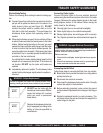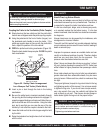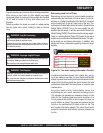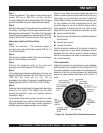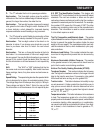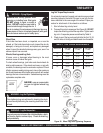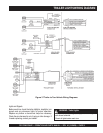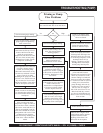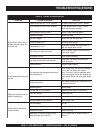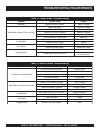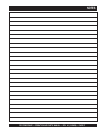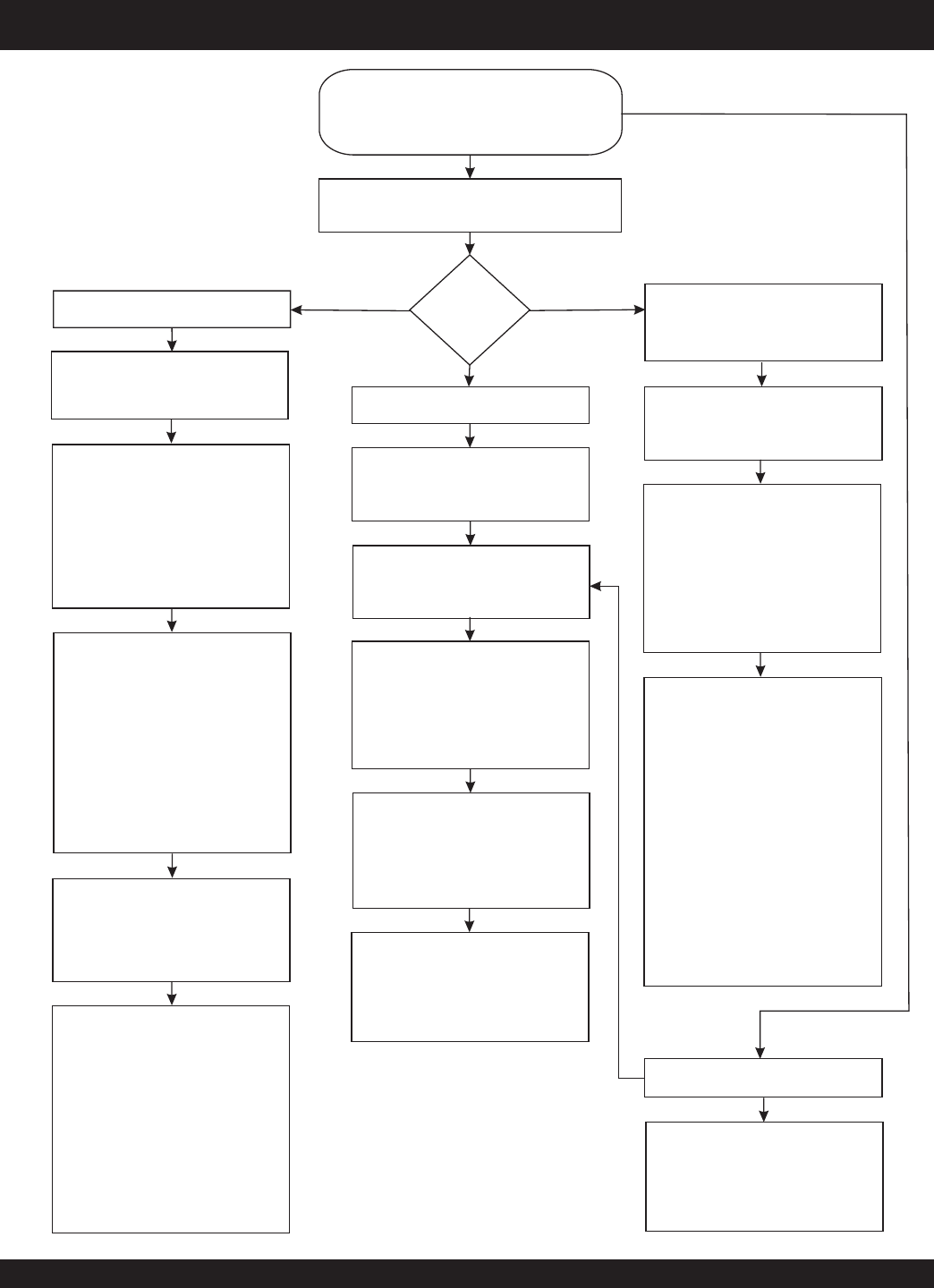
DRY PRIME PUMP — OPERATION AND PARTS MANUAL — REV. #3 (10/06/08) — PAGE 53
TROUBLESHOOTING (PUMP)
Priming or Pump
Flow Problems
Check for air discharge from the elbow on
the water fill tank. The cover must be on.
Air
Discharge?
Check vacuum gauge reading.
Check vacuum gauge reading.
High
No
Low
If low vacuum reading, vacuum
pump might not be producing
rated vacuum level.
Check the water level in the
hose below the fill cap. If level
is above half full on the hose,
check the vacuum pump
temperature and check for water
flow out of the vacuum pump
discharge hose. Check vacuum
pump hose for damage.
If the temperature and water flow
out of the vacuum pump is
normal, shut off the pump,
disconnect suction hose, do dry
vacuum test, and check vacuum
gauge. Check for air leaks
including at the pump seal. If the
oil level is low, add oil and redo
dry vacuum test. No oil could
indicate seal failure. Listen at the
seal oil fill cap for an air leak.
Check vacuum at vacuum pump
by disconnecting inlet hose. If
low, disassemble vacuum pump
and inspect.
If the vacuum pump water
temperature is high, or if there is
no water flow visible, clean the
filter in the water feed line. If a
filter is not installed, clean the
inlet orifice behind the vacuum
pump turbine with a wire. If the
problem persists, clean the
water reservoir by flushing with
clean water. A filter should be
added.
If the vacuum reading is 20” or
more, the vacuum pump is
working properly.
If the suction lift is too high,
reduce suction lift to a
maximum lift of 28 to 30 feet.
If the suction line is plugged, the
suction hose inner liner is
collapsed, the strainer is plugged
or the suction is buried or stuck
to the floor. Backflush to clean
the strainer.
If the strainer is clear, check the
inside of the hose for
obstructions. A collapsed hose
will return to normal without
vacuum. Replace the hose.
If the material pumped is too
thick or viscous, use a larger
diameter suction hose. If the
specific gravity is too high, move
the pump closer to the liquid.
Check to see that the drain,
surge control and backflush
valves are closed.
Check the suction hose for loose
fittings and check that the
strainer is under the liquid.
Shut off the pump, disconnect
discharge hose and inspect the
discharge check valve for wear
or not closing completely. If the
discharge check valve is
leaking, a good piece of PVC
discharge hose will collapse
and the pump should prime.
If there is a continued failure to
prime and build vacuum,
disconnect the suction hose and
do the dry vacuum test. If the
vacuum reading is normal and
there are no leaks, the problem
is a suction hose leak. If vacuum
reading is low, block off the
pump discharge and redo dry
vacuum test. If the vacuum is
still low, look for a large air
leak. If the seal oil level is low,
add oil and redo dry vacuum
test. No oil could indicate seal
failure. Listen at seal oil fill cap
for an air leak.
Primes but the flow is low.
Reduced flow at higher heads
could indicate that the impeller-
wearplate clearance needs
adjusting or that there is an
obstruction in the impeller.



